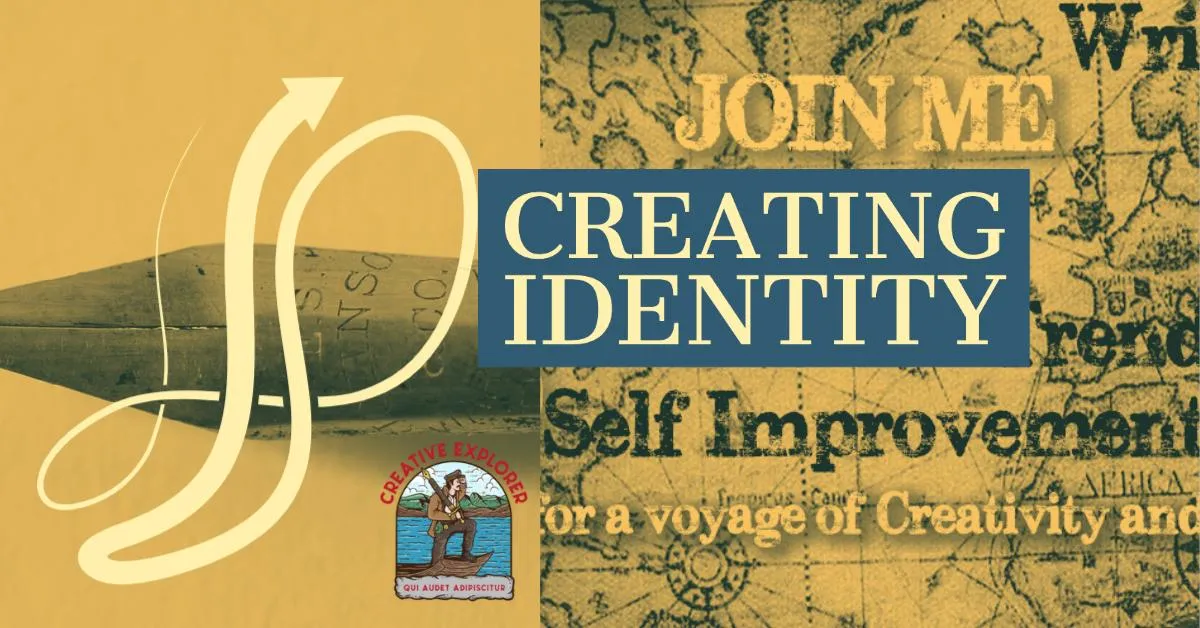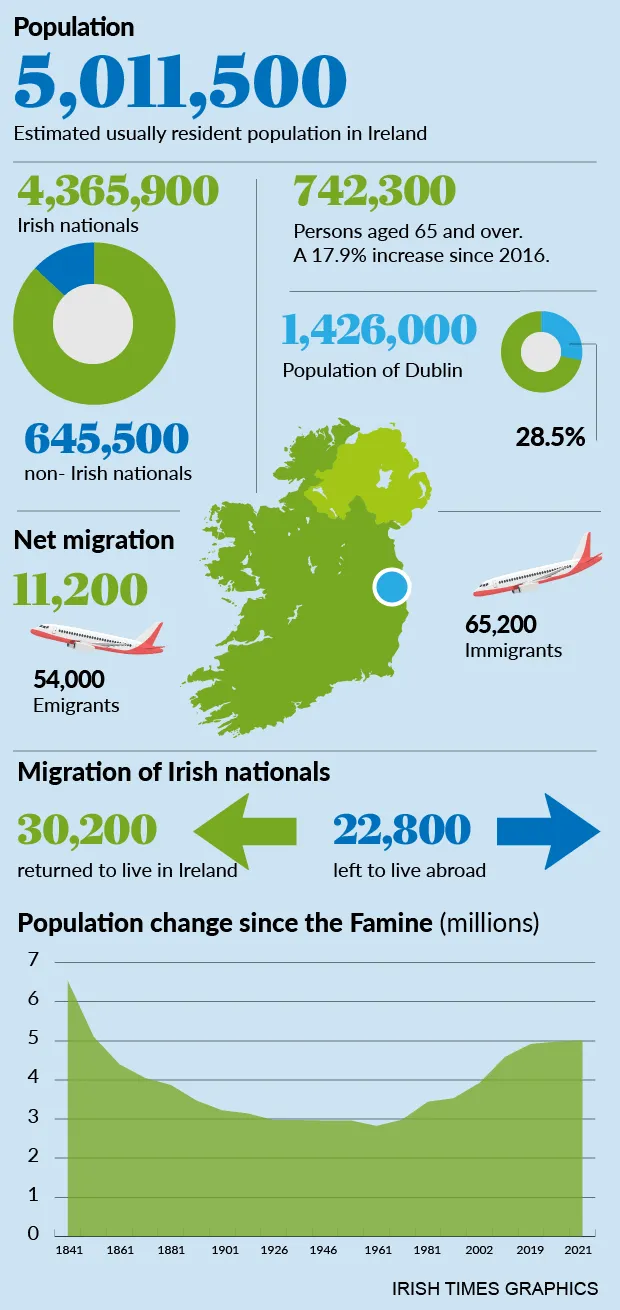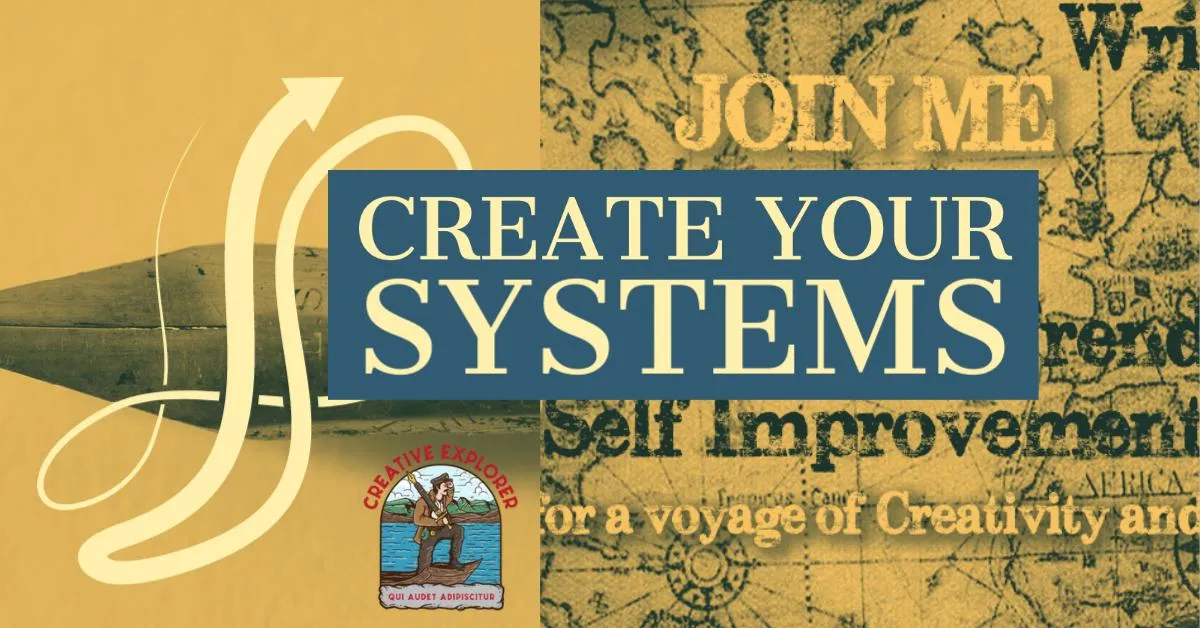"The Society that separates its Scholars from its Warriors, will have its thinking done by cowards and its fighting done by fools." Thucydides

PURPOSE: Become the Scholar Warrior for your Goals
Improve Every Single Day!
Improve Yourself 1% a Day = 3600%+ in a Year
Thought-Technique-Strategy of the Week:

Create Your Powerful Identity
Let's say you wish to excel in the art of painting. Or open your own woodworking business. Or become a Filmmaker which I did many years ago. The key is to utilize a Powerful Identity in reframing your Focus. Let's stick with painter for the moment.
Use the words: "I am a painter." The powerful use of the "I am..." phrase welds this new outlook to you mentally, intellectually but, more importantly, emotionally. Why emotionally? When you talk about painting (or any very exciting goal), then you can feel the electrical excitement within your body and Being.
"Being" is the act of existing within this newly embraced identity. Then you grow and become.
READ THE MAIN ARTICLE HERE
7 Actions To Change Your Life
Michael's Kenpo Karate Weapons Form - Knife & Pistol
You can see my Pistol & Knife form at approximately 10:31 here in the video from 2010. This is at Bryan Hawkins Kenpo Karate where I have studied Kenpo Karate for approximately over 35 years. The form is one that I created to advance in the system, utilizing Kenpo Karate principles. I use the form with the primary weapon as the firearm, duly guarded and using the knife for close-in drills. This is the training the Warrior phase!




Irish Demographic Destruction
The Irish population is declining based upon lower birthrrates and the immigration disaster for the country. Dr. Eoin Lenihan is a leading writer and analyst on the demographic destruction of Ireland. You can follow him here on X.
Predicting when a specific ethnic group might become a minority in a country involves complex demographic modeling, relying on assumptions about future immigration, fertility, mortality, and emigration rates, as well as how "ethnic Irish" is defined. Based on available data, here’s an analysis:
Key Data Points
Ethnic Composition (2022 Census):
77% of Ireland’s population identified as "White Irish" in 2022.
20% of the population was born outside Ireland, with significant immigrant groups including Poles, UK citizens, Indians, Romanians, and Ukrainians.
Non-Irish citizens accounted for 12% of the population.
Fertility Rate:
Ireland’s total fertility rate (TFR) was 1.5 in 2023, below the replacement level of 2.1.
The TFR has been declining, from 2.0 in 2013 to 1.5 in 2023, with projections suggesting a further drop to 1.3 by 2037.
Non-Irish nationals tend to have different age profiles, with fewer children under 14 (12.3% vs. 22.5% for Irish nationals), suggesting varied fertility patterns.
Immigration and Net Migration:
In the year to April 2024, Ireland saw 149,200 immigrants, a 17-year high, with 86,800 from non-EU/UK countries (including Ukrainians).
Net migration was 80,200 in 2024 (149,200 immigrants minus 69,000 emigrants).
Historically, net migration has been a significant driver of population growth, contributing 219,787 to the population increase between 2016 and 2022, compared to 27,915 from natural increase.
Population Projections:
Ireland’s population was 5.38 million in April 2024, projected to grow to 6.7 million by 2060.
The population is becoming more diverse, with 20% born abroad in 2022, up from 17% in 2016.
Analysis
To estimate when "Irish people" (assumed here as "White Irish" per census data) might become a minority (less than 50% of the population), we need to consider:
Fertility: A TFR of 1.5 implies a declining native population without immigration, as it’s below replacement level. If non-Irish groups have higher fertility rates (data is limited but suggests variation), their share could grow faster.
Immigration: High immigration, especially from non-EU countries, increases diversity. If 149,200 immigrants arrive annually, with 58% (86,800) from non-EU/UK countries, the non-Irish population grows rapidly.
Emigration: Emigration (69,000 in 2024, including 34,700 Irish citizens) reduces the native population’s share, though returning Irish citizens (30,000 in 2024) offset this slightly.
Definition of "Ethnic Irish": If "ethnic Irish" includes those with dual Irish citizenship (170,597 in 2022, up 63% from 2016), the decline might be slower.
Rough Projection
Assuming:
Constant net migration of ~80,000 annually (2024 levels).
A stable TFR of 1.5 for the White Irish population and slightly higher (e.g., 1.8) for non-Irish groups (a conservative estimate).
A starting point of 77% White Irish in 2022 (4.14 million out of 5.38 million).
Using a simplified cohort-component model:
The White Irish population grows slowly or declines due to low fertility and emigration (e.g., -0.5% annually).
The non-Irish population grows faster due to higher immigration and potentially higher fertility (e.g., +2-3% annually).
By 2050, the White Irish share could drop to ~55-60%, assuming current trends persist.
Reaching below 50% might occur around 2060-2070, depending on whether immigration remains high and fertility stays low.
Caveats
Data Limitations: No recent projections specifically model the "White Irish" population’s decline. Older claims (e.g., 2005 predictions of minority status by 2050) lack current support and were debunked for misrepresenting data.
Policy Changes: Immigration policies, asylum seeker inflows (e.g., 110,000 Ukrainians by 2025), or economic shifts could alter trends.
Social Sentiment: Posts on X reflect concerns about rapid demographic change, but claims of minority status by 2030 or 2040 are speculative and not backed by data.
Ethnic Identity: Future generations of immigrant descendants may identify as "Irish," complicating ethnic categorizations.
Conclusion
At current immigration and fertility rates, the "White Irish" population is unlikely to become a minority before 2050. A plausible estimate, based on simplified projections, suggests this could happen around 2060-2070, but this depends on sustained high immigration, low fertility, and consistent emigration patterns. More precise modeling would require detailed data on age-specific fertility and migration by ethnic group, which is currently unavailable. For further details, consult the Central Statistics Office (www.cso.ie) or migrationpolicy.org.

Irish Demographic Destruction
The Irish population is declining based upon lower birthrrates and the immigration disaster for the country. Dr. Eoin Lenihan is a leading writer and analyst on the demographic destruction of Ireland. You can follow him here on X.
Predicting when a specific ethnic group might become a minority in a country involves complex demographic modeling, relying on assumptions about future immigration, fertility, mortality, and emigration rates, as well as how "ethnic Irish" is defined. Based on available data, here’s an analysis:
Key Data Points
Ethnic Composition (2022 Census):
77% of Ireland’s population identified as "White Irish" in 2022.
20% of the population was born outside Ireland, with significant immigrant groups including Poles, UK citizens, Indians, Romanians, and Ukrainians.
Non-Irish citizens accounted for 12% of the population.
Fertility Rate:
Ireland’s total fertility rate (TFR) was 1.5 in 2023, below the replacement level of 2.1.
The TFR has been declining, from 2.0 in 2013 to 1.5 in 2023, with projections suggesting a further drop to 1.3 by 2037.
Non-Irish nationals tend to have different age profiles, with fewer children under 14 (12.3% vs. 22.5% for Irish nationals), suggesting varied fertility patterns.
Immigration and Net Migration:
In the year to April 2024, Ireland saw 149,200 immigrants, a 17-year high, with 86,800 from non-EU/UK countries (including Ukrainians).
Net migration was 80,200 in 2024 (149,200 immigrants minus 69,000 emigrants).
Historically, net migration has been a significant driver of population growth, contributing 219,787 to the population increase between 2016 and 2022, compared to 27,915 from natural increase.
Population Projections:
Ireland’s population was 5.38 million in April 2024, projected to grow to 6.7 million by 2060.
The population is becoming more diverse, with 20% born abroad in 2022, up from 17% in 2016.
Analysis
To estimate when "Irish people" (assumed here as "White Irish" per census data) might become a minority (less than 50% of the population), we need to consider:
Fertility: A TFR of 1.5 implies a declining native population without immigration, as it’s below replacement level. If non-Irish groups have higher fertility rates (data is limited but suggests variation), their share could grow faster.
Immigration: High immigration, especially from non-EU countries, increases diversity. If 149,200 immigrants arrive annually, with 58% (86,800) from non-EU/UK countries, the non-Irish population grows rapidly.
Emigration: Emigration (69,000 in 2024, including 34,700 Irish citizens) reduces the native population’s share, though returning Irish citizens (30,000 in 2024) offset this slightly.
Definition of "Ethnic Irish": If "ethnic Irish" includes those with dual Irish citizenship (170,597 in 2022, up 63% from 2016), the decline might be slower.
Rough Projection
Assuming:
Constant net migration of ~80,000 annually (2024 levels).
A stable TFR of 1.5 for the White Irish population and slightly higher (e.g., 1.8) for non-Irish groups (a conservative estimate).
A starting point of 77% White Irish in 2022 (4.14 million out of 5.38 million).
Using a simplified cohort-component model:
The White Irish population grows slowly or declines due to low fertility and emigration (e.g., -0.5% annually).
The non-Irish population grows faster due to higher immigration and potentially higher fertility (e.g., +2-3% annually).
By 2050, the White Irish share could drop to ~55-60%, assuming current trends persist.
Reaching below 50% might occur around 2060-2070, depending on whether immigration remains high and fertility stays low.
Caveats
Data Limitations: No recent projections specifically model the "White Irish" population’s decline. Older claims (e.g., 2005 predictions of minority status by 2050) lack current support and were debunked for misrepresenting data.
Policy Changes: Immigration policies, asylum seeker inflows (e.g., 110,000 Ukrainians by 2025), or economic shifts could alter trends.
Social Sentiment: Posts on X reflect concerns about rapid demographic change, but claims of minority status by 2030 or 2040 are speculative and not backed by data.
Ethnic Identity: Future generations of immigrant descendants may identify as "Irish," complicating ethnic categorizations.
Conclusion
At current immigration and fertility rates, the "White Irish" population is unlikely to become a minority before 2050. A plausible estimate, based on simplified projections, suggests this could happen around 2060-2070, but this depends on sustained high immigration, low fertility, and consistent emigration patterns. More precise modeling would require detailed data on age-specific fertility and migration by ethnic group, which is currently unavailable. For further details, consult the Central Statistics Office (www.cso.ie) or migrationpolicy.org.

Irish Demographic Destruction
The Irish population is declining based upon lower birthrrates and the immigration disaster for the country. Dr. Eoin Lenihan is a leading writer and analyst on the demographic destruction of Ireland. You can follow him here on X.
Predicting when a specific ethnic group might become a minority in a country involves complex demographic modeling, relying on assumptions about future immigration, fertility, mortality, and emigration rates, as well as how "ethnic Irish" is defined. Based on available data, here’s an analysis:
Key Data Points
Ethnic Composition (2022 Census):
77% of Ireland’s population identified as "White Irish" in 2022.
20% of the population was born outside Ireland, with significant immigrant groups including Poles, UK citizens, Indians, Romanians, and Ukrainians.
Non-Irish citizens accounted for 12% of the population.
Fertility Rate:
Ireland’s total fertility rate (TFR) was 1.5 in 2023, below the replacement level of 2.1.
The TFR has been declining, from 2.0 in 2013 to 1.5 in 2023, with projections suggesting a further drop to 1.3 by 2037.
Non-Irish nationals tend to have different age profiles, with fewer children under 14 (12.3% vs. 22.5% for Irish nationals), suggesting varied fertility patterns.
Immigration and Net Migration:
In the year to April 2024, Ireland saw 149,200 immigrants, a 17-year high, with 86,800 from non-EU/UK countries (including Ukrainians).
Net migration was 80,200 in 2024 (149,200 immigrants minus 69,000 emigrants).
Historically, net migration has been a significant driver of population growth, contributing 219,787 to the population increase between 2016 and 2022, compared to 27,915 from natural increase.
Population Projections:
Ireland’s population was 5.38 million in April 2024, projected to grow to 6.7 million by 2060.
The population is becoming more diverse, with 20% born abroad in 2022, up from 17% in 2016.
Analysis
To estimate when "Irish people" (assumed here as "White Irish" per census data) might become a minority (less than 50% of the population), we need to consider:
Fertility: A TFR of 1.5 implies a declining native population without immigration, as it’s below replacement level. If non-Irish groups have higher fertility rates (data is limited but suggests variation), their share could grow faster.
Immigration: High immigration, especially from non-EU countries, increases diversity. If 149,200 immigrants arrive annually, with 58% (86,800) from non-EU/UK countries, the non-Irish population grows rapidly.
Emigration: Emigration (69,000 in 2024, including 34,700 Irish citizens) reduces the native population’s share, though returning Irish citizens (30,000 in 2024) offset this slightly.
Definition of "Ethnic Irish": If "ethnic Irish" includes those with dual Irish citizenship (170,597 in 2022, up 63% from 2016), the decline might be slower.
Rough Projection
Assuming:
Constant net migration of ~80,000 annually (2024 levels).
A stable TFR of 1.5 for the White Irish population and slightly higher (e.g., 1.8) for non-Irish groups (a conservative estimate).
A starting point of 77% White Irish in 2022 (4.14 million out of 5.38 million).
Using a simplified cohort-component model:
The White Irish population grows slowly or declines due to low fertility and emigration (e.g., -0.5% annually).
The non-Irish population grows faster due to higher immigration and potentially higher fertility (e.g., +2-3% annually).
By 2050, the White Irish share could drop to ~55-60%, assuming current trends persist.
Reaching below 50% might occur around 2060-2070, depending on whether immigration remains high and fertility stays low.
Caveats
Data Limitations: No recent projections specifically model the "White Irish" population’s decline. Older claims (e.g., 2005 predictions of minority status by 2050) lack current support and were debunked for misrepresenting data.
Policy Changes: Immigration policies, asylum seeker inflows (e.g., 110,000 Ukrainians by 2025), or economic shifts could alter trends.
Social Sentiment: Posts on X reflect concerns about rapid demographic change, but claims of minority status by 2030 or 2040 are speculative and not backed by data.
Ethnic Identity: Future generations of immigrant descendants may identify as "Irish," complicating ethnic categorizations.
Conclusion
At current immigration and fertility rates, the "White Irish" population is unlikely to become a minority before 2050. A plausible estimate, based on simplified projections, suggests this could happen around 2060-2070, but this depends on sustained high immigration, low fertility, and consistent emigration patterns. More precise modeling would require detailed data on age-specific fertility and migration by ethnic group, which is currently unavailable. For further details, consult the Central Statistics Office (www.cso.ie) or migrationpolicy.org.





Irish Demographic Destruction
The Irish population is declining based upon lower birthrrates and the immigration disaster for the country. Dr. Eoin Lenihan is a leading writer and analyst on the demographic destruction of Ireland. You can follow him here on X.
Predicting when a specific ethnic group might become a minority in a country involves complex demographic modeling, relying on assumptions about future immigration, fertility, mortality, and emigration rates, as well as how "ethnic Irish" is defined. Based on available data, here’s an analysis:
Key Data Points
Ethnic Composition (2022 Census):
77% of Ireland’s population identified as "White Irish" in 2022.
20% of the population was born outside Ireland, with significant immigrant groups including Poles, UK citizens, Indians, Romanians, and Ukrainians.
Non-Irish citizens accounted for 12% of the population.
Fertility Rate:
Ireland’s total fertility rate (TFR) was 1.5 in 2023, below the replacement level of 2.1.
The TFR has been declining, from 2.0 in 2013 to 1.5 in 2023, with projections suggesting a further drop to 1.3 by 2037.
Non-Irish nationals tend to have different age profiles, with fewer children under 14 (12.3% vs. 22.5% for Irish nationals), suggesting varied fertility patterns.
Immigration and Net Migration:
In the year to April 2024, Ireland saw 149,200 immigrants, a 17-year high, with 86,800 from non-EU/UK countries (including Ukrainians).
Net migration was 80,200 in 2024 (149,200 immigrants minus 69,000 emigrants).
Historically, net migration has been a significant driver of population growth, contributing 219,787 to the population increase between 2016 and 2022, compared to 27,915 from natural increase.
Population Projections:
Ireland’s population was 5.38 million in April 2024, projected to grow to 6.7 million by 2060.
The population is becoming more diverse, with 20% born abroad in 2022, up from 17% in 2016.
Analysis
To estimate when "Irish people" (assumed here as "White Irish" per census data) might become a minority (less than 50% of the population), we need to consider:
Fertility: A TFR of 1.5 implies a declining native population without immigration, as it’s below replacement level. If non-Irish groups have higher fertility rates (data is limited but suggests variation), their share could grow faster.
Immigration: High immigration, especially from non-EU countries, increases diversity. If 149,200 immigrants arrive annually, with 58% (86,800) from non-EU/UK countries, the non-Irish population grows rapidly.
Emigration: Emigration (69,000 in 2024, including 34,700 Irish citizens) reduces the native population’s share, though returning Irish citizens (30,000 in 2024) offset this slightly.
Definition of "Ethnic Irish": If "ethnic Irish" includes those with dual Irish citizenship (170,597 in 2022, up 63% from 2016), the decline might be slower.
Rough Projection
Assuming:
Constant net migration of ~80,000 annually (2024 levels).
A stable TFR of 1.5 for the White Irish population and slightly higher (e.g., 1.8) for non-Irish groups (a conservative estimate).
A starting point of 77% White Irish in 2022 (4.14 million out of 5.38 million).
Using a simplified cohort-component model:
The White Irish population grows slowly or declines due to low fertility and emigration (e.g., -0.5% annually).
The non-Irish population grows faster due to higher immigration and potentially higher fertility (e.g., +2-3% annually).
By 2050, the White Irish share could drop to ~55-60%, assuming current trends persist.
Reaching below 50% might occur around 2060-2070, depending on whether immigration remains high and fertility stays low.
Caveats
Data Limitations: No recent projections specifically model the "White Irish" population’s decline. Older claims (e.g., 2005 predictions of minority status by 2050) lack current support and were debunked for misrepresenting data.
Policy Changes: Immigration policies, asylum seeker inflows (e.g., 110,000 Ukrainians by 2025), or economic shifts could alter trends.
Social Sentiment: Posts on X reflect concerns about rapid demographic change, but claims of minority status by 2030 or 2040 are speculative and not backed by data.
Ethnic Identity: Future generations of immigrant descendants may identify as "Irish," complicating ethnic categorizations.
Conclusion
At current immigration and fertility rates, the "White Irish" population is unlikely to become a minority before 2050. A plausible estimate, based on simplified projections, suggests this could happen around 2060-2070, but this depends on sustained high immigration, low fertility, and consistent emigration patterns. More precise modeling would require detailed data on age-specific fertility and migration by ethnic group, which is currently unavailable. For further details, consult the Central Statistics Office (www.cso.ie) or migrationpolicy.org.

Irish Demographic Destruction
The Irish population is declining based upon lower birthrrates and the immigration disaster for the country. Dr. Eoin Lenihan is a leading writer and analyst on the demographic destruction of Ireland. You can follow him here on X.
Predicting when a specific ethnic group might become a minority in a country involves complex demographic modeling, relying on assumptions about future immigration, fertility, mortality, and emigration rates, as well as how "ethnic Irish" is defined. Based on available data, here’s an analysis:
Key Data Points
Ethnic Composition (2022 Census):
77% of Ireland’s population identified as "White Irish" in 2022.
20% of the population was born outside Ireland, with significant immigrant groups including Poles, UK citizens, Indians, Romanians, and Ukrainians.
Non-Irish citizens accounted for 12% of the population.
Fertility Rate:
Ireland’s total fertility rate (TFR) was 1.5 in 2023, below the replacement level of 2.1.
The TFR has been declining, from 2.0 in 2013 to 1.5 in 2023, with projections suggesting a further drop to 1.3 by 2037.
Non-Irish nationals tend to have different age profiles, with fewer children under 14 (12.3% vs. 22.5% for Irish nationals), suggesting varied fertility patterns.
Immigration and Net Migration:
In the year to April 2024, Ireland saw 149,200 immigrants, a 17-year high, with 86,800 from non-EU/UK countries (including Ukrainians).
Net migration was 80,200 in 2024 (149,200 immigrants minus 69,000 emigrants).
Historically, net migration has been a significant driver of population growth, contributing 219,787 to the population increase between 2016 and 2022, compared to 27,915 from natural increase.
Population Projections:
Ireland’s population was 5.38 million in April 2024, projected to grow to 6.7 million by 2060.
The population is becoming more diverse, with 20% born abroad in 2022, up from 17% in 2016.
Analysis
To estimate when "Irish people" (assumed here as "White Irish" per census data) might become a minority (less than 50% of the population), we need to consider:
Fertility: A TFR of 1.5 implies a declining native population without immigration, as it’s below replacement level. If non-Irish groups have higher fertility rates (data is limited but suggests variation), their share could grow faster.
Immigration: High immigration, especially from non-EU countries, increases diversity. If 149,200 immigrants arrive annually, with 58% (86,800) from non-EU/UK countries, the non-Irish population grows rapidly.
Emigration: Emigration (69,000 in 2024, including 34,700 Irish citizens) reduces the native population’s share, though returning Irish citizens (30,000 in 2024) offset this slightly.
Definition of "Ethnic Irish": If "ethnic Irish" includes those with dual Irish citizenship (170,597 in 2022, up 63% from 2016), the decline might be slower.
Rough Projection
Assuming:
Constant net migration of ~80,000 annually (2024 levels).
A stable TFR of 1.5 for the White Irish population and slightly higher (e.g., 1.8) for non-Irish groups (a conservative estimate).
A starting point of 77% White Irish in 2022 (4.14 million out of 5.38 million).
Using a simplified cohort-component model:
The White Irish population grows slowly or declines due to low fertility and emigration (e.g., -0.5% annually).
The non-Irish population grows faster due to higher immigration and potentially higher fertility (e.g., +2-3% annually).
By 2050, the White Irish share could drop to ~55-60%, assuming current trends persist.
Reaching below 50% might occur around 2060-2070, depending on whether immigration remains high and fertility stays low.
Caveats
Data Limitations: No recent projections specifically model the "White Irish" population’s decline. Older claims (e.g., 2005 predictions of minority status by 2050) lack current support and were debunked for misrepresenting data.
Policy Changes: Immigration policies, asylum seeker inflows (e.g., 110,000 Ukrainians by 2025), or economic shifts could alter trends.
Social Sentiment: Posts on X reflect concerns about rapid demographic change, but claims of minority status by 2030 or 2040 are speculative and not backed by data.
Ethnic Identity: Future generations of immigrant descendants may identify as "Irish," complicating ethnic categorizations.
Conclusion
At current immigration and fertility rates, the "White Irish" population is unlikely to become a minority before 2050. A plausible estimate, based on simplified projections, suggests this could happen around 2060-2070, but this depends on sustained high immigration, low fertility, and consistent emigration patterns. More precise modeling would require detailed data on age-specific fertility and migration by ethnic group, which is currently unavailable. For further details, consult the Central Statistics Office (www.cso.ie) or migrationpolicy.org.

Irish Demographic Destruction
The Irish population is declining based upon lower birthrrates and the immigration disaster for the country. Dr. Eoin Lenihan is a leading writer and analyst on the demographic destruction of Ireland. You can follow him here on X.
Predicting when a specific ethnic group might become a minority in a country involves complex demographic modeling, relying on assumptions about future immigration, fertility, mortality, and emigration rates, as well as how "ethnic Irish" is defined. Based on available data, here’s an analysis:
Key Data Points
Ethnic Composition (2022 Census):
77% of Ireland’s population identified as "White Irish" in 2022.
20% of the population was born outside Ireland, with significant immigrant groups including Poles, UK citizens, Indians, Romanians, and Ukrainians.
Non-Irish citizens accounted for 12% of the population.
Fertility Rate:
Ireland’s total fertility rate (TFR) was 1.5 in 2023, below the replacement level of 2.1.
The TFR has been declining, from 2.0 in 2013 to 1.5 in 2023, with projections suggesting a further drop to 1.3 by 2037.
Non-Irish nationals tend to have different age profiles, with fewer children under 14 (12.3% vs. 22.5% for Irish nationals), suggesting varied fertility patterns.
Immigration and Net Migration:
In the year to April 2024, Ireland saw 149,200 immigrants, a 17-year high, with 86,800 from non-EU/UK countries (including Ukrainians).
Net migration was 80,200 in 2024 (149,200 immigrants minus 69,000 emigrants).
Historically, net migration has been a significant driver of population growth, contributing 219,787 to the population increase between 2016 and 2022, compared to 27,915 from natural increase.
Population Projections:
Ireland’s population was 5.38 million in April 2024, projected to grow to 6.7 million by 2060.
The population is becoming more diverse, with 20% born abroad in 2022, up from 17% in 2016.
Analysis
To estimate when "Irish people" (assumed here as "White Irish" per census data) might become a minority (less than 50% of the population), we need to consider:
Fertility: A TFR of 1.5 implies a declining native population without immigration, as it’s below replacement level. If non-Irish groups have higher fertility rates (data is limited but suggests variation), their share could grow faster.
Immigration: High immigration, especially from non-EU countries, increases diversity. If 149,200 immigrants arrive annually, with 58% (86,800) from non-EU/UK countries, the non-Irish population grows rapidly.
Emigration: Emigration (69,000 in 2024, including 34,700 Irish citizens) reduces the native population’s share, though returning Irish citizens (30,000 in 2024) offset this slightly.
Definition of "Ethnic Irish": If "ethnic Irish" includes those with dual Irish citizenship (170,597 in 2022, up 63% from 2016), the decline might be slower.
Rough Projection
Assuming:
Constant net migration of ~80,000 annually (2024 levels).
A stable TFR of 1.5 for the White Irish population and slightly higher (e.g., 1.8) for non-Irish groups (a conservative estimate).
A starting point of 77% White Irish in 2022 (4.14 million out of 5.38 million).
Using a simplified cohort-component model:
The White Irish population grows slowly or declines due to low fertility and emigration (e.g., -0.5% annually).
The non-Irish population grows faster due to higher immigration and potentially higher fertility (e.g., +2-3% annually).
By 2050, the White Irish share could drop to ~55-60%, assuming current trends persist.
Reaching below 50% might occur around 2060-2070, depending on whether immigration remains high and fertility stays low.
Caveats
Data Limitations: No recent projections specifically model the "White Irish" population’s decline. Older claims (e.g., 2005 predictions of minority status by 2050) lack current support and were debunked for misrepresenting data.
Policy Changes: Immigration policies, asylum seeker inflows (e.g., 110,000 Ukrainians by 2025), or economic shifts could alter trends.
Social Sentiment: Posts on X reflect concerns about rapid demographic change, but claims of minority status by 2030 or 2040 are speculative and not backed by data.
Ethnic Identity: Future generations of immigrant descendants may identify as "Irish," complicating ethnic categorizations.
Conclusion
At current immigration and fertility rates, the "White Irish" population is unlikely to become a minority before 2050. A plausible estimate, based on simplified projections, suggests this could happen around 2060-2070, but this depends on sustained high immigration, low fertility, and consistent emigration patterns. More precise modeling would require detailed data on age-specific fertility and migration by ethnic group, which is currently unavailable. For further details, consult the Central Statistics Office (www.cso.ie) or migrationpolicy.org.

Irish Demographic Destruction
The Irish population is declining based upon lower birthrrates and the immigration disaster for the country. Dr. Eoin Lenihan is a leading writer and analyst on the demographic destruction of Ireland. You can follow him here on X.
Predicting when a specific ethnic group might become a minority in a country involves complex demographic modeling, relying on assumptions about future immigration, fertility, mortality, and emigration rates, as well as how "ethnic Irish" is defined. Based on available data, here’s an analysis:
Key Data Points
Ethnic Composition (2022 Census):
77% of Ireland’s population identified as "White Irish" in 2022.
20% of the population was born outside Ireland, with significant immigrant groups including Poles, UK citizens, Indians, Romanians, and Ukrainians.
Non-Irish citizens accounted for 12% of the population.
Fertility Rate:
Ireland’s total fertility rate (TFR) was 1.5 in 2023, below the replacement level of 2.1.
The TFR has been declining, from 2.0 in 2013 to 1.5 in 2023, with projections suggesting a further drop to 1.3 by 2037.
Non-Irish nationals tend to have different age profiles, with fewer children under 14 (12.3% vs. 22.5% for Irish nationals), suggesting varied fertility patterns.
Immigration and Net Migration:
In the year to April 2024, Ireland saw 149,200 immigrants, a 17-year high, with 86,800 from non-EU/UK countries (including Ukrainians).
Net migration was 80,200 in 2024 (149,200 immigrants minus 69,000 emigrants).
Historically, net migration has been a significant driver of population growth, contributing 219,787 to the population increase between 2016 and 2022, compared to 27,915 from natural increase.
Population Projections:
Ireland’s population was 5.38 million in April 2024, projected to grow to 6.7 million by 2060.
The population is becoming more diverse, with 20% born abroad in 2022, up from 17% in 2016.
Analysis
To estimate when "Irish people" (assumed here as "White Irish" per census data) might become a minority (less than 50% of the population), we need to consider:
Fertility: A TFR of 1.5 implies a declining native population without immigration, as it’s below replacement level. If non-Irish groups have higher fertility rates (data is limited but suggests variation), their share could grow faster.
Immigration: High immigration, especially from non-EU countries, increases diversity. If 149,200 immigrants arrive annually, with 58% (86,800) from non-EU/UK countries, the non-Irish population grows rapidly.
Emigration: Emigration (69,000 in 2024, including 34,700 Irish citizens) reduces the native population’s share, though returning Irish citizens (30,000 in 2024) offset this slightly.
Definition of "Ethnic Irish": If "ethnic Irish" includes those with dual Irish citizenship (170,597 in 2022, up 63% from 2016), the decline might be slower.
Rough Projection
Assuming:
Constant net migration of ~80,000 annually (2024 levels).
A stable TFR of 1.5 for the White Irish population and slightly higher (e.g., 1.8) for non-Irish groups (a conservative estimate).
A starting point of 77% White Irish in 2022 (4.14 million out of 5.38 million).
Using a simplified cohort-component model:
The White Irish population grows slowly or declines due to low fertility and emigration (e.g., -0.5% annually).
The non-Irish population grows faster due to higher immigration and potentially higher fertility (e.g., +2-3% annually).
By 2050, the White Irish share could drop to ~55-60%, assuming current trends persist.
Reaching below 50% might occur around 2060-2070, depending on whether immigration remains high and fertility stays low.
Caveats
Data Limitations: No recent projections specifically model the "White Irish" population’s decline. Older claims (e.g., 2005 predictions of minority status by 2050) lack current support and were debunked for misrepresenting data.
Policy Changes: Immigration policies, asylum seeker inflows (e.g., 110,000 Ukrainians by 2025), or economic shifts could alter trends.
Social Sentiment: Posts on X reflect concerns about rapid demographic change, but claims of minority status by 2030 or 2040 are speculative and not backed by data.
Ethnic Identity: Future generations of immigrant descendants may identify as "Irish," complicating ethnic categorizations.
Conclusion
At current immigration and fertility rates, the "White Irish" population is unlikely to become a minority before 2050. A plausible estimate, based on simplified projections, suggests this could happen around 2060-2070, but this depends on sustained high immigration, low fertility, and consistent emigration patterns. More precise modeling would require detailed data on age-specific fertility and migration by ethnic group, which is currently unavailable. For further details, consult the Central Statistics Office (www.cso.ie) or migrationpolicy.org.
Take Action Today!
SCHOLAR WARRIOR WAY - COURSES

Scholar Warrior Way
Take Action to Transform Yourself
By taking the Scholar Warrior Way Course, you will get Michael's program for Self-Improvement in his pursuit of Creative Excellence in Writing, Filmmaking, Martial arts and his other pursuits from his major curious outlook. Here are the 7 Steps that he uses....
Powerful Why - the Key to Enthusiasm and Fulfillment
Scholar Warrior Identity - Embracing the new Mentality - now!
Your Morning Routine - Starting the day Right.
Brainstorming Your How - Strategy thinking and tactics
Create Your Own Systems - Become efficient with predictable results
Building Transforming Habits - Habit creates Destiny
The Art of Sleep - Long ignored but a necessary health break.
Levels 1, 2 and 3 - Detailing and add more videos, wisdom, resources and Learning Materials for your Growth and Self-Improvement.
FAQS
What is The Purpose of the "ScholarWarriorWay" ?
By engaging in the mental perspective of the Scholar Warrior, you embrace two aspects of your life: The Scholar with a constant focus on self-development and self-improvement. The Warrior whereby you learn techniques about courage, action and derring-do to achieve your true authentic goals for a fulfilled life.
How much does Scholar Warrior Way cost?
The cost of could be absolutely no money if you just want to get on our newsletter to read the various articles on the website. If you want to take the courses on various levels, then you might spend $200-300 per year. Think of it this way: If you could improve yourself 100-200-300-1000-3600% in a single year, then how much is it worth? The price of two meals and drinks at a restaurant that you'll never remember? Make a better life choice.
How do I know I work with the ScholarWarriorWay?
ScholarWarriorWay is broken down into 7 Major Strategies. You can pick one and work on it for a few weeks, then add another strategies. They start with the Powerful Why and end with the Art of Sleep.

